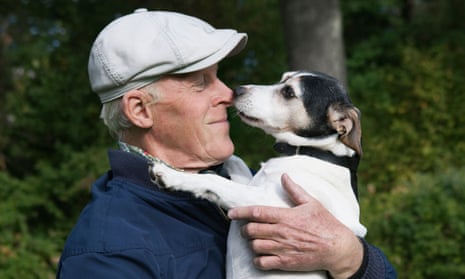The secret of why dogs are man’s best friend could be lurking in their genes, according to new research.
Scientists say they have found a handful of genes that appear to be linked to the tendency for dogs to seek human help and contact.
“[Our aim] is to try to understand the genetic underpinnings of domestication: what is it that has helped to turn the wolf, which is really not interested in humans to start off with, into this extremely sociable creature which is the dog?” said Per Jensen, co-author of the research from Linköping University in Sweden. “We think we have at least found some of the genetic background of this process.”
Writing in the journal Scientific Reports, the scientists describe how they sought to probe the genetics behind canine behaviour by enlisting the help of 437 beagles bred and raised in laboratory conditions.
Each dog was placed in a room with a researcher they did not know and presented with the same task.
Three transparent, sliding plastic lids, each covering a treat, were presented to each dog. However, one of the lids was fixed and could not be moved, no matter how much the dog pawed it or pushed it with its nose.
“We know that wolves don’t seek help, they will attempt to solve the problem on their own, and some dogs actually do that - they just keep going and trying to open this lid,” said Jensen. “But the most common reaction is at some point to turn to the human.”
Each dog was given three minutes to retrieve the treats, with their behaviour recorded on video and scored for the frequency and duration of various behaviours , such as jumping up at the researcher or making eye contact.
The 95 dogs with the top scores and the 95 with the bottom scores for social interactions were then selected, and DNA samples taken. Their genomes were then analysed and compared in what is known as a genome wide association study, with variations across the genome checked for an association with scores for specific behaviours, such as the duration for which dog was in physical contact with the researcher.
The results revealed variations within two genomic regions that appear to be linked with a canine yen for human contact, within which five genes were identified as being the most likely to be associated with the behaviour.
But, Jensen admits, it is unlikely to be the full picture. “There are probably plenty of genes interacting with these five,” he said, adding that it is also unknown exactly how the five genes might be influencing doggy sociability. The team are now looking to see if the same results can be found in other breeds of dog, including Labrador retrievers.
The authors also reveal that four of the five genes have previously been associated with an increased risk of a range social disorders in humans, including autism.
“Of course we do not know any mechanisms or anything like that, so we can’t say anything about whether or not these mechanisms will be similar in dogs,” said Jensen.
While the new study offers some clues to doggy sociability the authors caution that there are other factors at play.
“We also know that the genetic contribution to this variation is only about 30%, so 70% of the variation has to do with things like experience,” said Jensen.
Eleanor Raffan, a researcher in canine genetics from the University of Cambridge, said that the research provides some hints about which genes might influence doggy sociability towards humans, but that the study focused on only certain types of behaviour and, given the complexity of the trait, tens or hundreds of genes might all be playing a small role.
“Even if one or more of the five genes identified do exert an effect, it’s likely only a small part of the story,” she said.

Comments (…)
Sign in or create your Guardian account to join the discussion